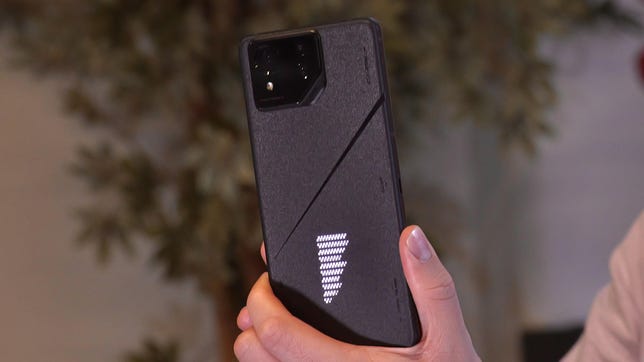
SCORE
Asus ROG Phone 8 Pro
- Revamped design
- Powerful specs
- Decent photos
While standing tall with its 6.78-inch display, gone is the upper bezel that hid the last ROG Phone 7’s front-facing camera — otherwise last seen in 2019 on phones like the Samsung Galaxy S9 and the Google Pixel 4. The ROG Phone 8 Pro has a punch-hole front-facing camera just as we see on most Android phones. The full-color secondary display on the back of the phone says goodbye in favor of a still eye-grabbing mini-LED display, which is even more arresting on the Pro model.
What results is something that looks reminiscent of the black version of the Nothing Phone 2 with the gaming chops of prior ROG phones as well as the specs and $1,200 (£1,100) starting price that we expect from this year’s Android flagships. My particular review unit is the kitted out $1,500 version of the ROG Phone 8 Pro, with a ludicrously high 24GB of memory and 1TB of storage. That maxed-out configuration allows me to easily multitask, which through my testing included alternating between Grand Theft Auto: San Andreas, Dead Cells and texting while waiting forever to queue into GeForce Now’s free tier for cloud gaming.
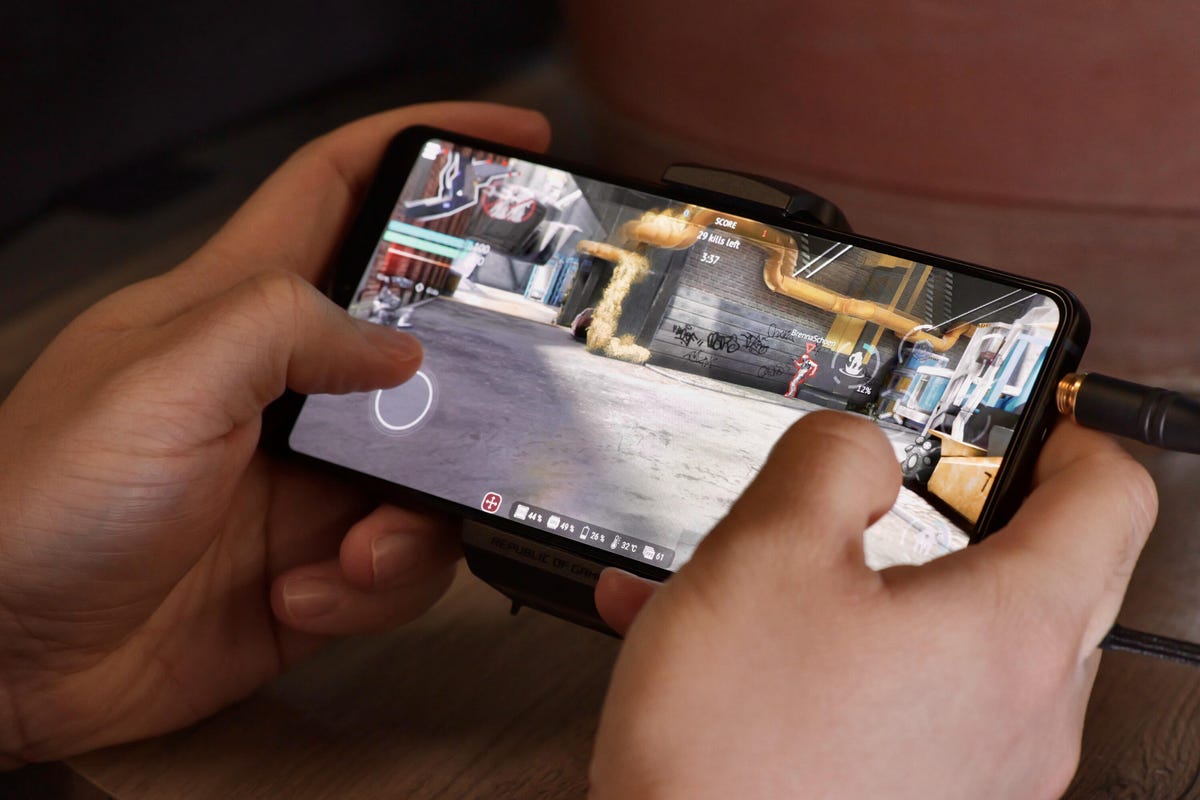
The 6.78-inch display has a 165Hz refresh rate and a 720Hz touch sampling rate.
The AI features are nice and certainly helpful, but nowhere near the level of photo manipulation that we’re seeing on Google’s Pixel 8. While Asus likely plans to keep the Phone 8 Pro gaming focused over AI-focused, we still have to keep in mind that in 2024 it’s highly likely that other companies’ flagships are going to have AI front and center. It’s possible that the ROG’s AI features will feel more like a light touch by comparison.
But even with more subtle AI ambitions, the Asus ROG Phone 8 Pro at its starting spec of 512GB of space and 16GB of memory is still a beast. You get the newest chip, tons of space, lots of memory, and it’s the only high-end phone out there that gives you as many ports as a MacBook Air.
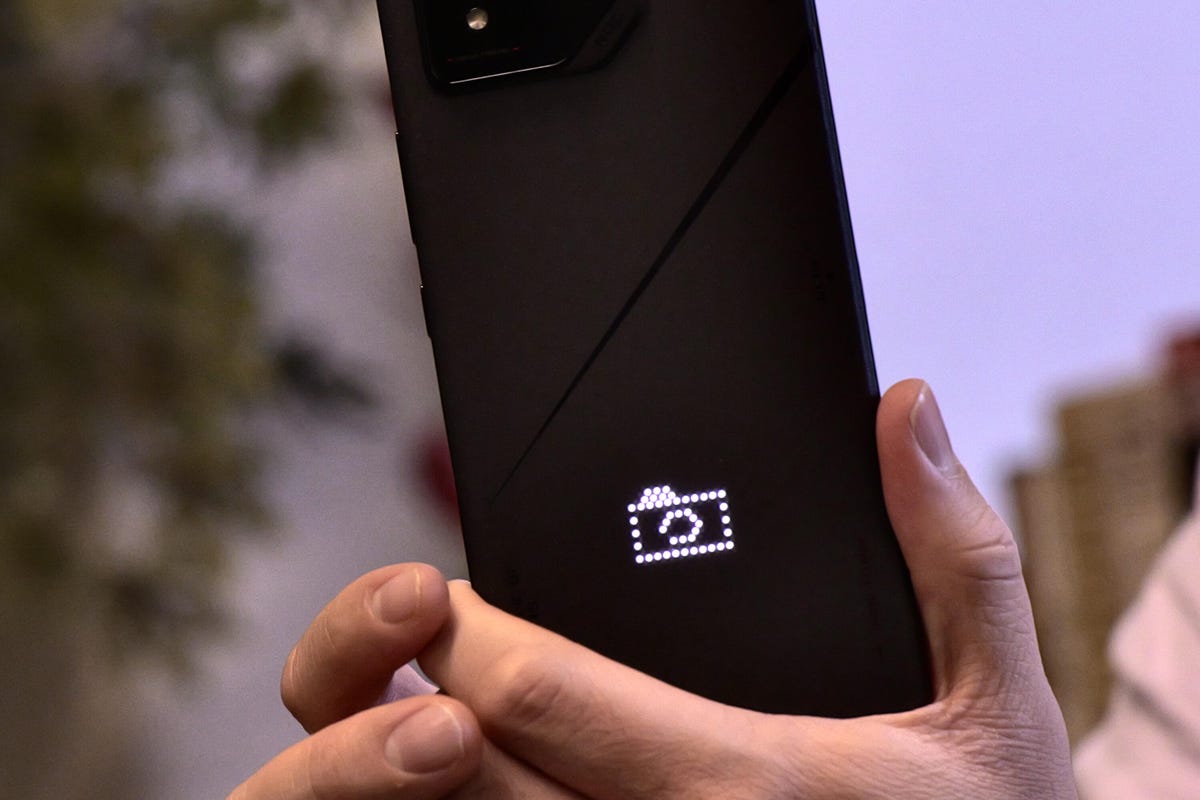
The AniMe mini-LED display shows contextual information, like text or a camera icon when taking a photo.
The front 6.78-inch display has an optical in-screen fingerprint sensor that can unlock the phone. By default the screen runs at an adaptive refresh rate between 1 and 120Hz, but you can have the screen run at 165Hz at all times. The screen has a 720Hz touch sampling rate — the same as last year’s Phone 7 — for responsiveness.
Both features helped when I played Dead Cells, since the game supports a higher refresh rate and battling through dungeons was easier with that responsiveness rate. The Phone 8 Pro also includes its AirTriggers sensors, which I can program like shoulder buttons when holding the phone horizontally. My preference is still to hook the phone up with a game controller when time and space allow, but for subway commuting the responsiveness for the touchscreen has been sufficient for the fast-paced game.
Like other gaming phones, the Phone 8 Pro gets warm when playing games at the higher graphics and frame rates that the phone is capable of. While Asus says that the phone now makes use of conductive cooling to draw heat to the back of the phone, I did find that it makes the back of the phone noticeably hot to touch. A case should help alleviate that, as should the aforementioned AeroActive X cooler attachment.
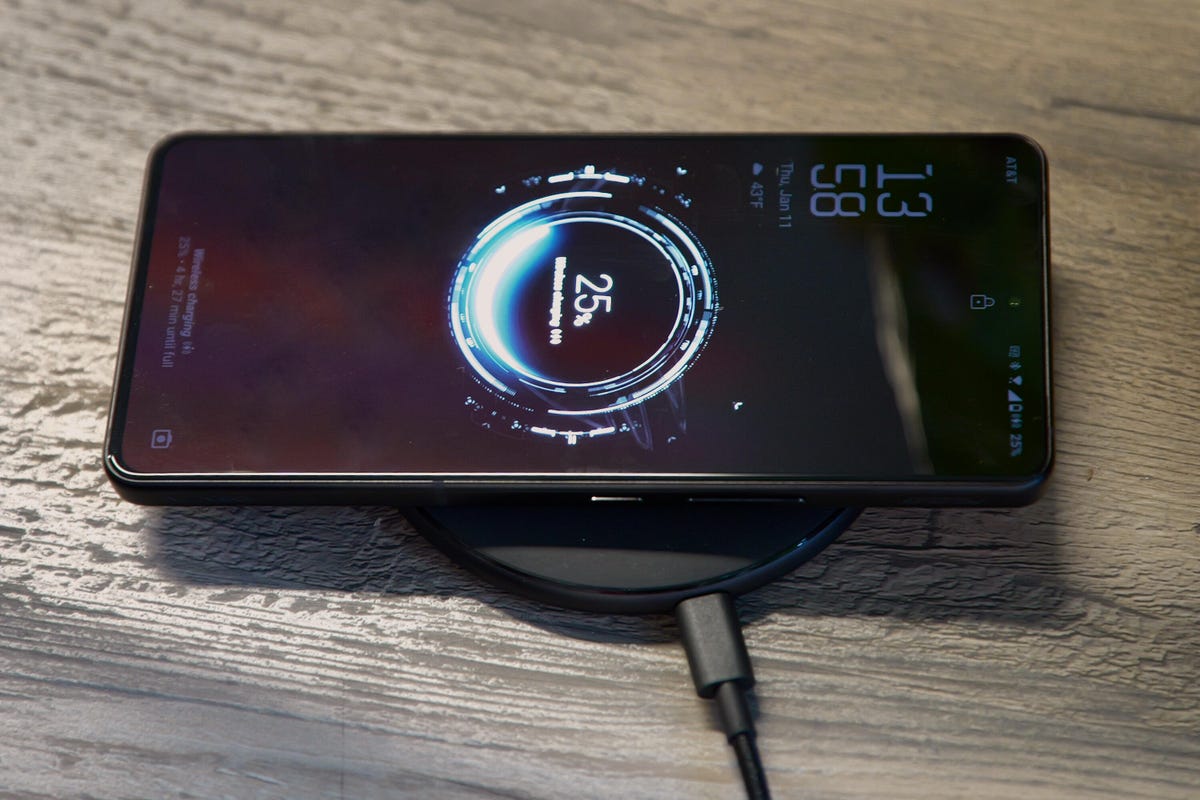
This is the first ROG phone to include wireless charging.
Gaming phone rival RedMagic for instance uses an under-display front-facing camera to provide that unobstructed view, but photos taken by under-display cameras aren’t yet at the same quality as those shooting from a hole cut out of the display. To accommodate this, Asus provides an option to either let games fill the full screen or shrink the display area slightly in order to avoid the cutout from interfering. Most games are unlikely to be affected by the loss of space, but the option is there in the event that it might.
The ROG Phone 8 Pro has a 5,500mAh battery, which is smaller but still sizable compared with the ROG Phone 7’s 6,000mAh battery. While I found the ROG Phone 7’s 6,000mAh to easily get me through two days of use, I found a more mixed result with the ROG Phone 8 Pro.
On days with heavy use, such as one where I ran GeForce Now in the background for several hours while I did other tasks and played games stored locally, I drew the full battery down to 20% by the end of the day. With less intensive use, which still included an hour of gameplay and miscellaneous tasks like calls, texting and music, I was able to stretch the battery to last through two days of use on a single charge. While your mileage will vary according to how power hungry your usage is, Asus does ship the phone with a 65-watt wired charger and this year’s phone includes 15-watt wireless charging. In my 30-minute wired charging test, I was able to get the battery from 0% to 69% while the 30-minute wireless charging test took it from 1% to 26%.
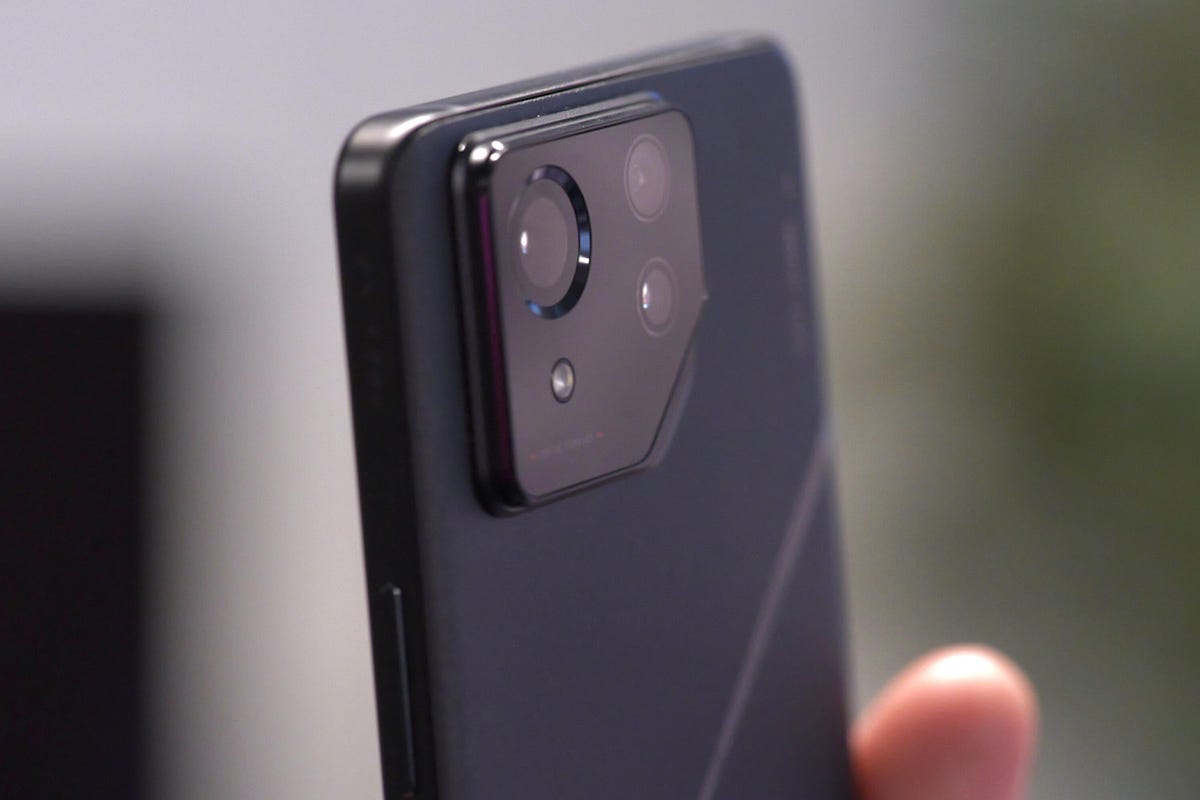
The ROG Phone 8 Pro’s cameras.
Asus ROG Phone 8 Pro cameras
I’ll be direct: The Asus ROG Phone 8 Pro takes good photos for a gaming phone. It has a 50-megapixel main camera, a 13-megapixel ultrawide and 32-megapixel telephoto. In my testing, the cameras were able to pick up a lot of color and detail — and I wager the Snapdragon 8 Gen 3 is doing a lot of the heavy lifting.

A self-taken photo on the Asus ROG Phone 8 Pro’s 32-megapixel front-facing camera.
My food photos of a shrimp and avocado salad captured the glisten of the vinaigrette sprinkled on top, and my office test photos of a grass wall replicated many of the shades of green on display. The phone’s 32-megapixel front-facing camera does a decent job of differentiating between my black face mask and cardigan and held up for my video calls.

The grass wall documented by the RedMagic 9 Pro’s camera.
I took comparison shots with the RedMagic 9 Pro, which also runs on the Snapdragon 8 Gen 3 and packs a 50-megapixel main camera. Compared with photos taken by its Asus counterpart, the RedMagic 9 Pro’s photos have more color and detail.

Photo of Astor Place taken on the RedMagic 9 Pro.
This included photos taken of the Arcade1Up cabinets in the office using both the default zoom and 3x zoom.
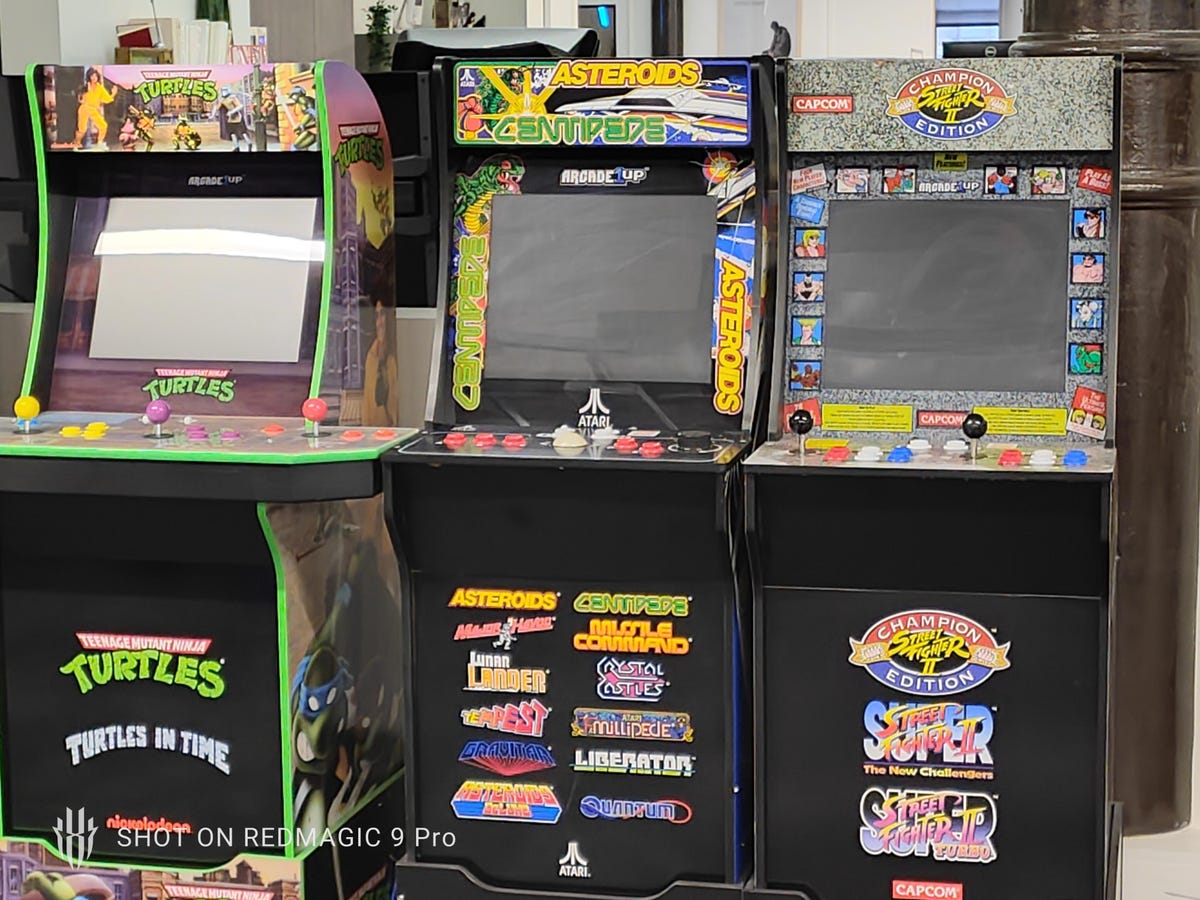
Arcade1Up cabinets taken on RedMagic 9 Pro at the default zoom.
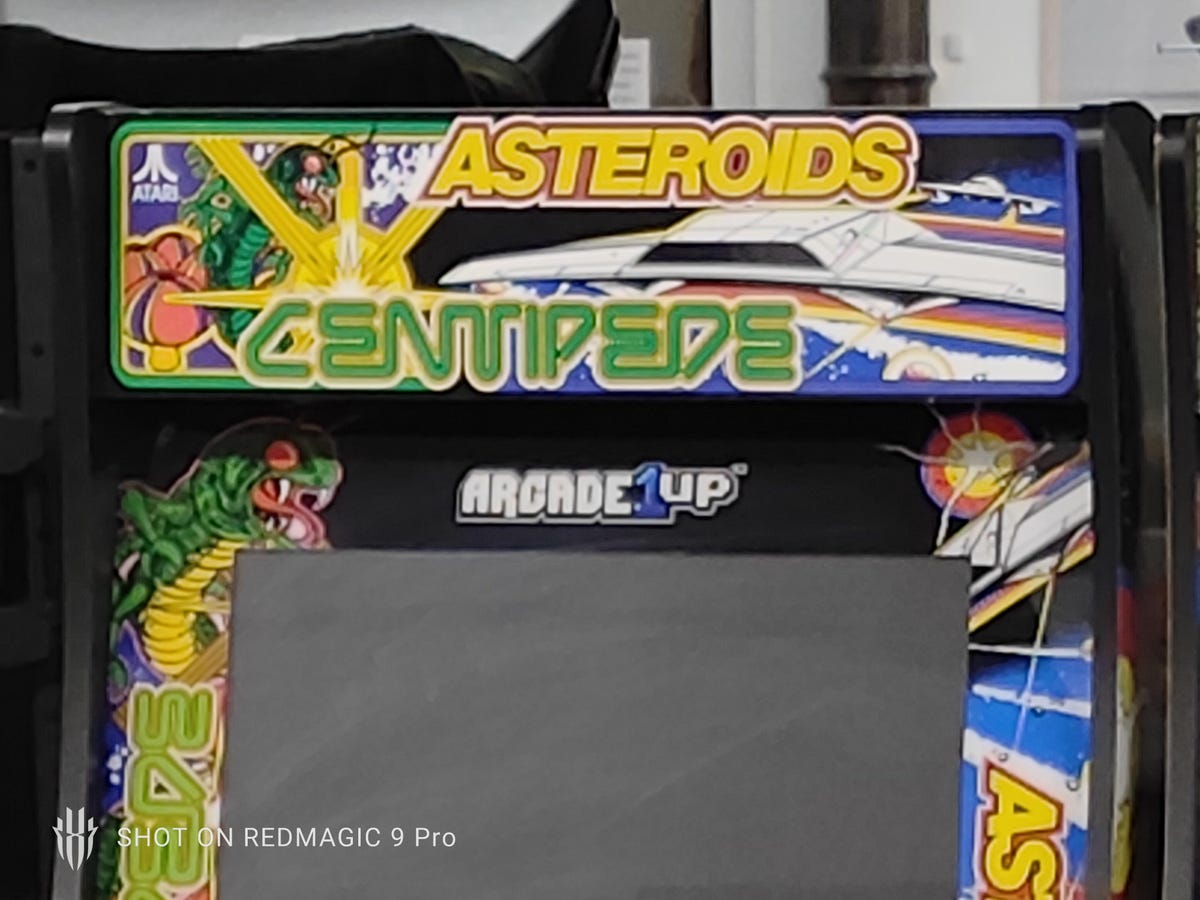
3x zoom photo taken on the RedMagic 9 Pro.
Both phones did a good job brightening up CNET’s TV lab, which is a lowlight area when all of our blackout curtains are set up. Both phones were able to discern our couch and the floor.
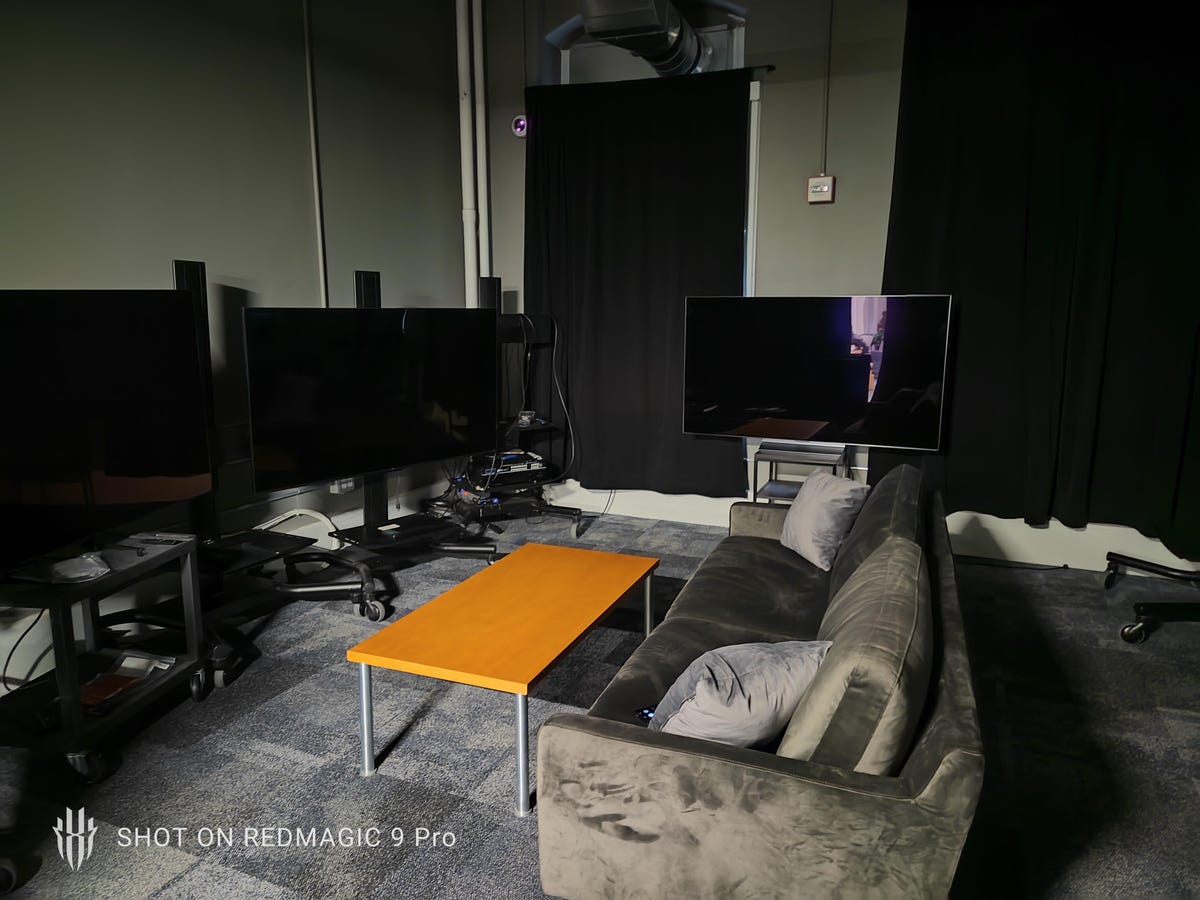
Night mode on the RedMagic 9 Pro.
When turning the cameras toward a pitch black area — which is particularly demanding — the Asus was able to soften out the image noise and discern at least a few details. But the RedMagic was drowned out by image noise. We haven’t yet reviewed the RedMagic 9 Pro, but it’s important to note that its starting price is a much lower $649 than the ROG Phone 8 Pro’s $1,200 pricetag.
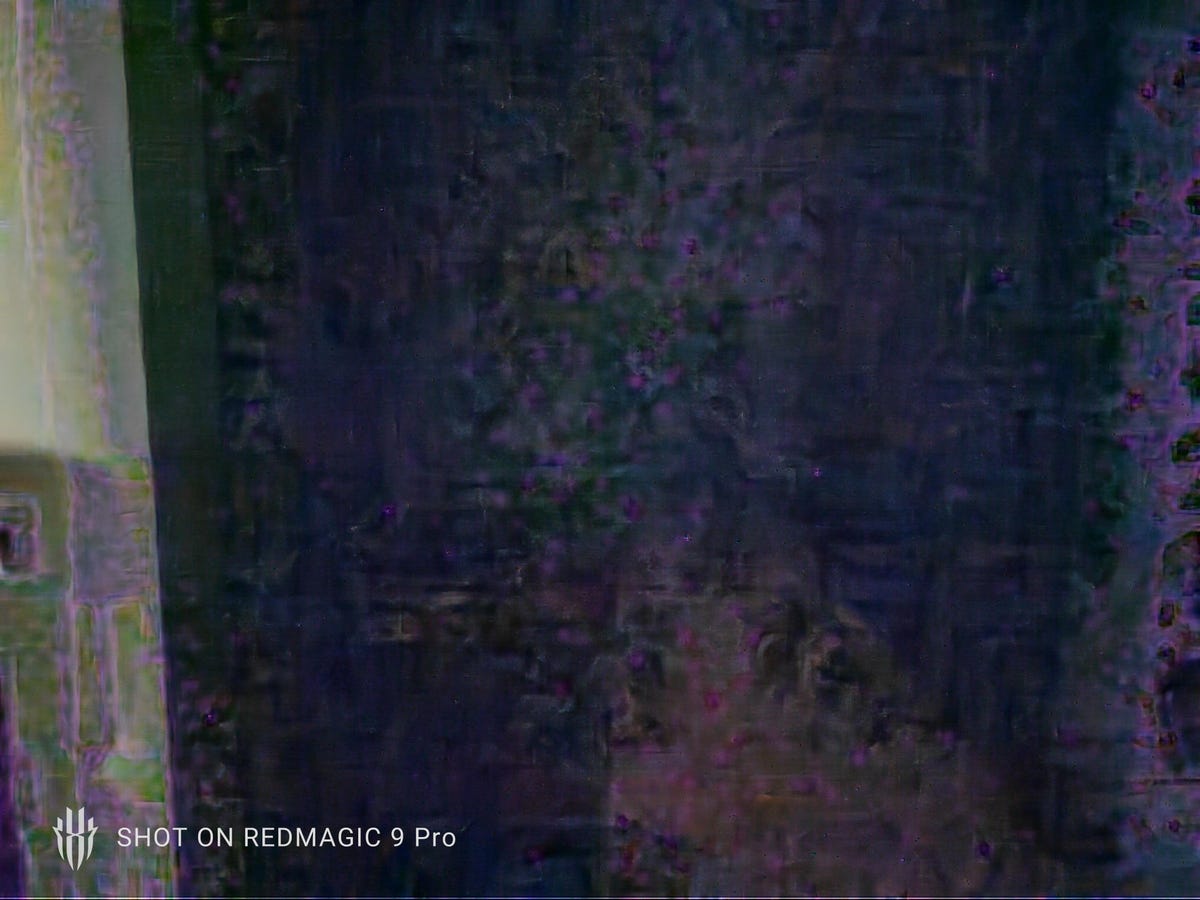
The RedMagic 9 Pro created a lot of image noise attempting to photograph the same extremely dark space.
The Asus ROG Phone 8 Pro can also record video at 8K and 24 frames per second, as well as at 4K and 60fps. When testing that 8K setting, I did notice the phone chug a little bit, but the video quality still came out decent for a gaming phone. Asus includes a stabilizer in its camera that the company says is used for both photography and for videos.
It’s great to see that the Phone 8 Pro can turn in some good photos, and that will make the phone substantially more useful as a communication device as well as a gaming machine. But Asus also has a first-mover advantage right now, and we’re likely to soon see phones that include the Snapdragon 8 Gen 3 that give the camera even more emphasis.
Watch this: How We Test Phones
04:54
